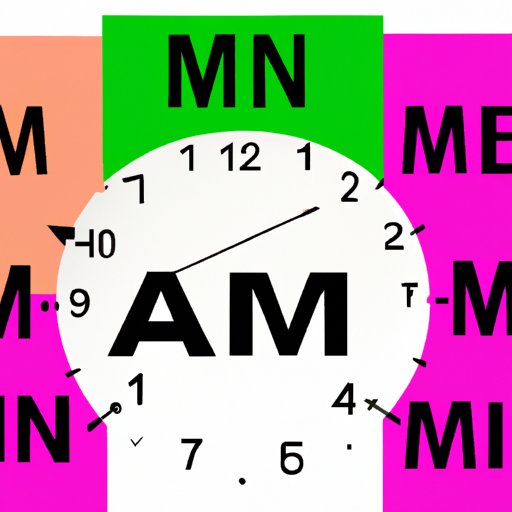
Introduction
Do you struggle with remembering the difference between AM and PM? It’s a common problem, and one that can lead to confusion and even missed appointments or deadlines. Understanding AM and PM is an essential part of time management and avoiding any related consequences. This article will explore a variety of tips and tricks to help you remember the difference between AM and PM with ease.
Make use of mnemonic devices
Mnemonic devices are tools used to aid memory. One of the most common mnemonic devices for remembering AM and PM is to link the letters AM with “ante meridiem,” which means “before noon,” and PM with “post meridiem,” which means “after noon.” Saying these phrases out loud or writing them down can help you remember which is which.
Associate AM and PM with daily routines
Another method is to associate AM with the morning routine and PM with the evening routine. This method capitalizes on the familiarity of daily routines and connects times of day with activities that are commonly associated with them. For example, morning routines might involve activities like waking up, having breakfast, and getting dressed, all of which happen before noon, or AM. On the other hand, evening routines might involve activities like having dinner, watching TV, and going to bed, all of which happen after noon, or PM.
Visualize the clock
Another way to remember AM and PM is to visualize the clock face. The clock face has 12 numbers on it, each representing an hour. The hands of the clock rotate twice in a day, once in the morning, and once in the afternoon and evening. It’s important to remember that AM and PM denote 12-hour periods, not 24-hour periods. So, 12 PM is not midnight, but noon, and conversely, 12 AM is not noon, but midnight. Visualizing different times of day on the clock face can help solidify which times are AM and which are PM.
Practice with timed activities
Doing timed activities with specific times of day can also help reinforce the concept of AM and PM. Setting alarms or reminders for specific tasks can help you become more aware of the different times of day and which is which. For example, setting an alarm for 7 AM to wake up and start your day helps reinforce the concept that 7 AM is part of the morning, or AM. Similarly, setting a reminder for 6 PM to start dinner reinforces the concept of 6 PM being part of the evening, or PM.
Connect to real-life examples
Finally, it’s important to connect the concept of AM and PM to real-life examples to motivate yourself to remember them. There are many potential consequences of getting it wrong, from missed appointments to showing up too early or too late for events. Connect to these examples by imagining the negative consequences of getting it wrong or recalling a time when it led to confusion. This can help fuel your determination to learn and implement these concepts effectively.
Conclusion
Remembering the difference between AM and PM is vital for managing your time effectively. In this article, we’ve covered a variety of ways to help you remember the difference between AM and PM, from mnemonic devices to associating them with daily routines, visualizing the clock face, practicing timed activities and connecting to real-life examples. Experiment with these different methods to find what works best for you, and take control of your time management today.




